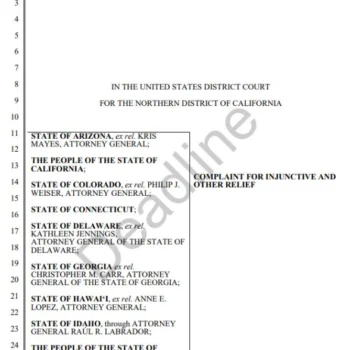A coalition of 34 American states has filed a lawsuit against the social media giant Meta, accusing Facebook and Instagram of improperly manipulating juveniles who use their platforms. This development coincides with accelerated advances in text and generative artificial intelligence (AI).

Legal representatives from several states, including California, New York, Ohio, South Dakota, Virginia, and Louisiana, allege that Meta uses its algorithms to promote addictive behavior and negatively impact children’s mental health via features such as the “Like” icon.
According to a recent report, the chief AI scientist at Meta stated that concerns over the existential risks of the technology are “premature.” Meta has already utilized AI to address trust and security issues on its platforms. Despite this, government litigants continue with legal action.

The attorneys for the states are seeking damages, restitution, and compensation ranging from $5,000 to $25,000 per alleged incident for each of the states mentioned in the document.
In the meantime, the Internet Watch Foundation (IWF) of the United Kingdom has expressed alarm over the alarming spread of AI-generated child sexual abuse material (CSAM).
In a recent report, the IWF disclosed the discovery of over 20,254 AI-generated CSAM images within a single dark web forum in less than a month, expressing concern that this influx of distressing content has the potential to overwhelm the internet.
The British organization urged global cooperation to combat CSAM and proposed a multifaceted approach. This involves modifying existing laws, enhancing law enforcement education, and implementing regulatory oversight for AI models.
The IWF recommends that AI developers prohibit their AI from generating child abuse content, exclude associated models, and prioritize eradicating such content from their models.
The development of generative AI image generators has substantially enhanced the creation of realistic human duplicates. Midjourney, Runway, Stable Diffusion, and OpenAI’s Dall-E are examples of platforms that can produce real images.
